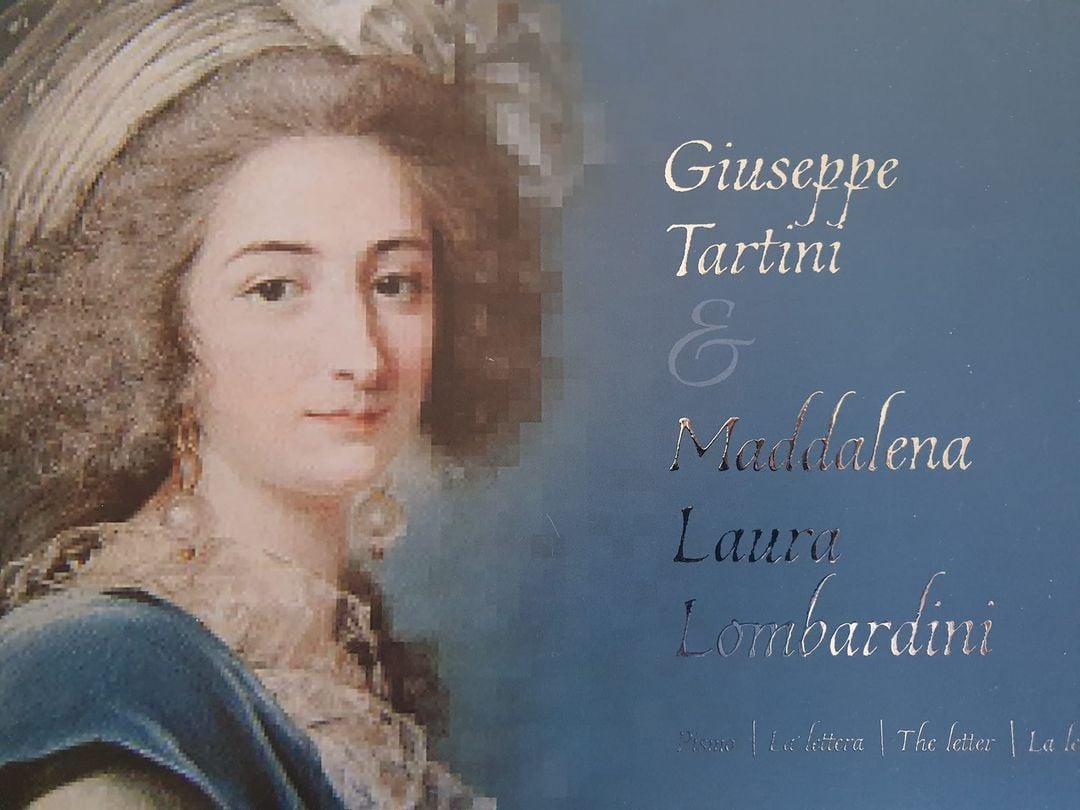Rojstni dan velikega skladatelja in violinista Giuseppeja Tartinija

il Trillo n. 61
04/04/2022
Vabilo k sodelovanju na mednarodnem pesniškem natečaju
04/10/2022
Vljudno vabljeni k rezervaciji vstopnic za koncert, posvečen Giuseppeju Tartiniju ob praznovanju 330. obletnice njegovega rojstva, ki bo v Tartinijevem gledališču v Piranu, v petek, 8. aprila 2022, ob 19.00. Pokličite na telefonsko številko 041 671 297 ali pišite na naslov [email protected] do srede, 6. 4. 2022, do 12.00.
Na koncertu bo nastopila violinistka Chouchane Siranossian in Venice Baroque Orchestra.
Vabimo vas tudi na predstavitev nove publikacije Pomorskega muzeja “Sergej Mašera” Piran z naslovom Giuseppe Tartini & Maddalena Laura Lombardini Pismo/La lettera/The Letter/La lettre/Der Brief, ki bo v petek, 8. aprila 2022, ob 11.00 v Tartinijevi hiši. Tartinijeve napotke, ki jih je namenil svoji učenki, bo na mojstrovi violini predstavil Zdravko Pleše. Tudi za ta dogodek je treba svojo prisotnost potrditi do srede, 6. aprila 2022, do 12.00.
V četrtek, 7. aprila 2022, bo na Konservatoriju Giuseppeja Tartinija v Trstu ob 330. obletnici njegovega rojstva, 8. aprila 1692, slavnostno odprtje stalnega razstavnega prostora “La Stanza di Tartini” (Tartinijevega spominska soba), Tartini Exhibition Point, posvečena spominkom, dokumentom, rokopisom in gradivom, ki je pripadalo velikemu violinistu.
Program:
+ ob 18.00 predavanje muzikologinje Margherite Canale
+ nagovor predsednika konservatorija, Lorenza Capalda
+ nagovor predstojnika konservatorija prof. Sandra Torlontana
+ ob 20.30 Konzert baročnega ansambla konservatorija
Violinistka Chouchane Siranossian sodi med največje virtuoze na mednarodni baročni sceni.
Lani je za zgoščenko s Tartinijevimi koncerti, ki jih je posnela z Venice Baroque Orchestra, prejela mednarodno nagrado ICMA (International Classical Music Awards).
Njena naravna lahkotnost pri interpretaciji zahtevnih Tartinijevih del nas ponese k besedam njegovih sodobnikov, ki so govorili, da ‘Tartinijeva glasba nima pravega učinka, če ni izvedena v skladu z njegovimi nauki’.
Chouchane je povsem ujela okus Šole narodov, v kateri improvizirana ornamentika ni toga, ampak, kot je Tartini učil svoje študente, nastaja sproti, rojena iz globoke notranje asimilacije z mojstrovim slogom, in v edinstvenem trenutku poustvarja začetno glasbeno idejo, kot to počnejo današnji jazz glasbeniki.
Prava glasba se ohranja skozi stoletja in združuje različne sloge v skupni ideji podajanja glasbe v živo.
Giuseppe Tartini (Piran,1692-Padova, 1770) je bil ena najizvirnejših glasbenih osebnosti sredine 18. stoletja: virtuozni violinist, skladatelj, teoretik in učitelj, hkrati pa tudi kulturna referenčna točka v evropskem glasbenem svetu tistega časa in pomemben učitelj violine za učence, ki so obiskovali njegovo »Šolo narodov«. Njegovi estetski ideali in raziskovanje fizičnih in akustičnih temeljev harmonije so vplivali tudi na glasbo naslednjih generacij.
Njegovo udejstvovanje kot skladatelj in violinist je od dvajsetih let 18. stoletja dalje močno povezano z baziliko sv. Antona v Padovi. Tam je leta 1721 zasedel mesto prve violine/vodje orkestra, ne da bi mu bilo treba opraviti obveznega izpita in s posebno zanj ustvarjeno kvalifikacijo, ki mu je omogočala pripravo in vodenje glasbenega programa za bogoslužje.
V tem kontekstu je nastala njegova bogata zbirka koncertov za violino in orkester, ki so bili v veliki meri napisani za izvajanje med liturgičnim slavjem v baziliki. Zastarela študija te bogate zbirke skladb je koncertni katalog muzikologa Douniasa (D), sestavljen leta 1935, ki združuje 125 koncertov in 7 dvomljivih del, ki so jim najnovejše raziskave in identifikacija novih virov dodali nove skladbe, ki skupaj obsegajo skoraj 160 koncertov. Novi digitalni tematski katalog si lahko ogledate na strani Discover Tartini.



